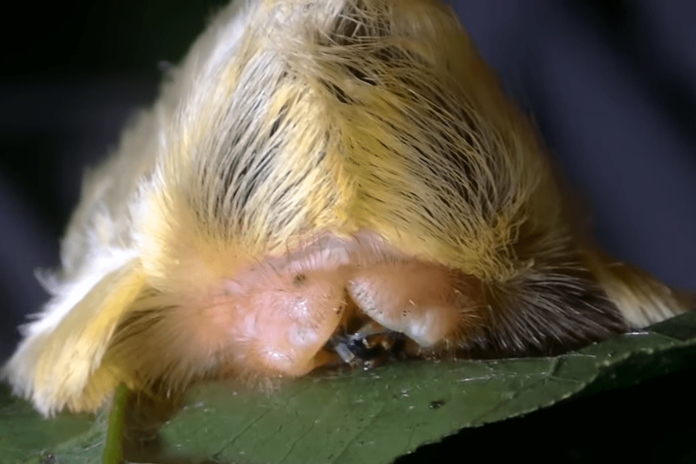While the bug looks like a harmless, discarded toupée, the VDOF says that the “hairs” on the caterpillar “are actually venomous spines that cause a painful reaction if touched. The puss caterpillar, which is one of the most venomous caterpillars in the U.S., is the larva stage of the Southern flannel moth known as Megalopyge opercularis,” Nancy Troyano, Ph.D., a board certified entomologist.
Officials with the S.C. Department of Natural Resources ask residents to be on the lookout for Puss Caterpillars this October.
They are called puss caterpillars because their thick, fluffy setae resemble the fur of a pussycat.
After molting, adults become moths and are called flannel moths because of their fluffy, wavy, flannel-like scales.
Two generations occur each year with two peaks of abundance of caterpillars in July and October. The milder weather in S.C. this October produced higher than normal numbers.
AND it’s not just S.C.
Writes Yahoo News: Months after the invasion of murder hornets in the Pacific Northwest, health officials in Virginia are warning residents to be on the lookout for a new bug menace — a venomous breed of hairy caterpillar that has been spotted in the eastern part of the state. The Virginia Department of Forestry shared the warning on Facebook earlier this week, along with a photo of the caterpillar, which is covered in human-like hair.
“VDOF’s forest health team has received reports of the puss caterpillar in a few eastern Virginia counties,” read the Oct. 6 post. While the bug looks like a harmless, discarded toupée, the VDOF says that the “hairs” on the caterpillar “are actually venomous spines that cause a painful reaction if touched.”
The puss caterpillar, which is one of the most venomous caterpillars in the U.S., is the larva stage of the Southern flannel moth known as Megalopyge opercularis, Nancy Troyano, Ph.D., a board certified entomologist and director of operations education and training for Ehrlich Pest Control, tells Yahoo Life. “These caterpillars have a dense covering of fine hairs that range in color from tan to dark brown and gray,” she says.
Puss caterpillars are most commonly found in the southeastern and south central portion of the U.S., although Troyano says they have been reported as far north as New Jersey and, as far west, as Missouri.
The winter months, just ahead will be spent in a cocoon spun on a host plant.
The most dangerous months for being stung are July and October.


